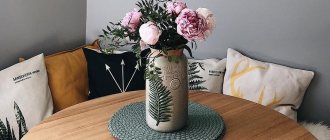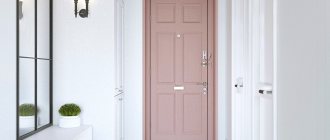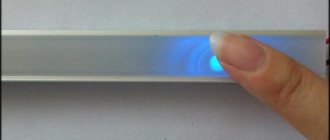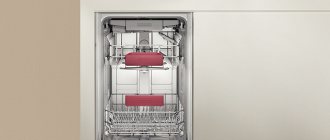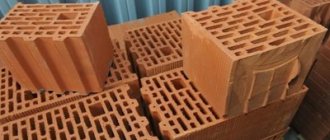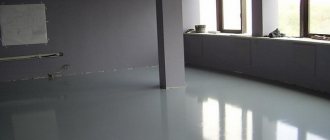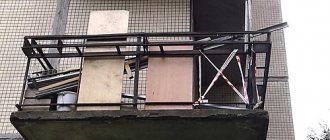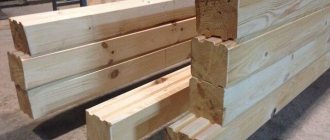Cork is a fundamentally different coating, different from the usual laminite, tiles or linoleum. If you are looking for an unusual and environmentally friendly flooring, look at cork flooring; It is important to know the pros and cons of this material in order to make the right choice. Let's figure out what properties a cork floor is valuable for, what it comes in, and how to choose the best option.
Cork floor in the living room interior Source midcenturymoderngroovy.com
Where do they get the cork from?
Cork is the name given to the bark of the evergreen cork oak, the main plantations of which are located in Portugal, Spain, northern Africa, as well as Italy and France. Mediterranean raw materials are particularly dense and have a high content of suberin, a bark substance that reduces thermal conductivity and permeability to water and gases.
The cork harvest begins from 25-year-old trees; At the same time, part of the bark is torn off so that the plant can recover. The recovery period lasts 8-18 years, depending on soil and weather conditions. The first cut produces rough raw material, then soft, high-quality cork grows. Oak lives on average 150 years, during which time 8 to 16 harvests are harvested from the tree.
Cork is considered an environmentally friendly material not only because of its natural origin. During its preparation, trees are not destroyed, which cannot be said about traditional wooden floors. Cork oak plantations in the Mediterranean region alone occupy 2.2 million hectares, and the annual harvest reaches 350-360 thousand tons. Cork is used to make floor and wall tiles, bottle caps, and shoe soles.
Harvesting cork oak bark Source bentandbree.com
Cork: what the market offers
In hardware stores, you can find several types of floor cork, and it differs from wall-mounted options in its greater thickness. The budget option is a technical jam. It is sold in rolls, by the meter, made from pressed production waste and therefore costs less than other options. Its scope of use is a substrate for insulating the finishing floor covering.
Solid tiles are cut from layers of cork bark; this is an expensive and rare material that can only be purchased to order. Besides these price extremes, there are two more practical options: interlocking and adhesive tiles. They have different structures and are used in different ways.
About interlocking tiles
Material with a thickness of 10-14 mm is also called hard-backed tiles, cork laminate or parquet; it consists of the following layers:
- The basis. It is made from high-density wood board (HDF). Grooves and tenons are cut out on each part to ensure a tight connection.
- Substrate. A layer of technical cork 2-3 mm thick is glued under the base. It smoothes out and compensates for uneven subfloors.
Varieties of tile design Source pinimg.com
- Decorative layer. Options available: cork or wood veneer (luxury option) or pressed chips.
- Protective layer. At the factory, the decorative surface is coated with two layers of varnish. The third layer is applied after installation to protect the joints and smooth out unevenness.
The interlocking type cork flooring is not glued to the subfloor. The individual parts are connected to each other using a tongue-and-groove system; they simply lie on the subfloor. This method of installation is called floating, and has the following features:
- Installation is quick and the connection is high quality.
- For installation it is important that the base is level. Otherwise, the parts will be positioned slightly differently (at different heights). This will be noticeable in places where elements adjoin each other. On uneven surfaces, it is preferable to use tiles with chamfers; their cut edges will visually mask the defect.
- Cork is a living material and tends to change size. Therefore, it is laid like a laminate, with a damper joint around the perimeter of the room. The junction seam is standard, 8-10 mm.
Laying a castle floor Source pavimentosdecoart.com
- On an uneven surface, the locks wear out faster, and the surface begins to creak when walking. Its service life can be increased if a substrate no thicker than 2 mm is laid under the cork floor (a thicker one will deform on uneven surfaces, which will lead to squeaking).
- Interlocking tiles are suitable for living rooms. In damp areas, water can seep through the joints, causing the cork floor to warp.
About adhesive tiles
Adhesive tiles do not have a rigid base. It consists of two layers: a lower budget backing and a decorative front layer, and has a thickness of 4-8 mm. The front surface is made of pressed chips or a solid layer of cork, and the tile itself has the following characteristics:
- It can be square (for example, 300x300, 450x450 mm) or rectangular (450x150, 600x300 mm).
- Three types of adhesive products are produced: varnished, pre-varnished and without a protective coating. The last two options can be left as is, or varnished yourself (two or three thin layers, respectively). The tiles can have a natural color or tinting.
Samples of adhesive tiles Source jandrscarpetcleaning.com
- Since the tiles do not have a rigid base, they are simply glued to the subfloor. Using material of different shades, it is easy to decorate the floor with an ornament or zone a room.
- Installation with glue is more difficult than with locking. Without the appropriate experience, you can get a coating whose shortcomings (cracks, warping, peeling elements) will appear later.
- Adhesive tiles, laid in compliance with the technology, do not allow water to pass through. It is installed not only in living rooms, but also in wet areas.
See also: Catalog of companies that specialize in finishing materials and related work
Pros of cork flooring
Cork flooring is gaining increasing interest as an option with many beneficial qualities. The material has a porous structure, so it is light, but at the same time durable and elastic. The springy cork floor is pleasant to walk on barefoot; it retains heat well and at the same time dampens sounds - it seems as if you are walking on carpet. Its other qualities are also interesting:
- Benefit for health. The soft and elastic surface has a beneficial effect on the musculoskeletal system; This type of covering is recommended for children’s rooms, and orthopedists advise walking on it barefoot.
Products in natural shades Source carpetconnectioncapps.com
- Safety. We are talking not only about the naturalness of the material, but also about its performance characteristics. The cork coating does not slip, does not collect dust, and does not require special care.
- Cork is not subject to rotting. Spilled liquid will not be absorbed, but will remain on the surface and will be easy to clean up. The coating will not deteriorate, but only if it is covered with a protective layer of varnish or wax.
- The structure and appearance of the decorative layer do not deteriorate under the influence of household chemicals and various liquids. Only alkaline solutions can harm the coating.
- The material does not absorb odors, does not interfere with air circulation, and bacteria do not like it, which, in general, has a beneficial effect on the microclimate of the house and reduces the likelihood of allergies.
- The cork layer is not afraid of solar ultraviolet radiation and temperature fluctuations. It is durable and frost-resistant enough to be safely used on an open balcony, loggia or terrace.
- Decorative. The material is surprisingly diverse in palette. You can choose a soft cream, bright brown, cool white or black texture to match the marble.
Cork flooring creates a cozy feeling Source jimcdn.com
- Versatility. The coating is used in any room, from the bedroom and living room, to the nursery and kitchen.
Features of care
Cork flooring has an important advantage - it does not require special care . It does not attract dirt, dust and is not saturated with odors. Cleaning can be easily achieved with a vacuum cleaner and a damp cloth. At the same time, aggressive detergents should be used with caution.
The instructions for the material indicate prohibited substances. Solvents are dangerous for cork and can affect the color.
Often, owners of a private home have a question about whether it is necessary to insulate a cork floor. It has increased thermal insulation properties and retains heat well in the room.
Minuses
Natural material has become fashionable relatively recently. Maybe that's why parquet, laminate and linoleum inspire more confidence than cork flooring; its pros and cons are more specific. Cork coatings have the following disadvantages:
- High price. At the same time, the locking material is more expensive to purchase, but the adhesive material will ultimately cost more. The cost of any cork will be higher than that of laminate, but lower than that of natural parquet boards.
- Complicated installation of adhesive tiles. In order for the coating to be of high quality, it is necessary to involve specialists, and this increases the final cost of the floor.
- Difficulties in installing interlocking floors. It is very easy to install, but requires additional costs: the cork is placed on a foam backing, and the edges of the covering around the perimeter of the room will have to be covered with a plinth.
- In terms of rigidity, cork is inferior to parquet boards and laminate. Over time, marks from heavy furniture will appear on it; High heels can also cause damage. The problem can be reduced by using thicker slabs.
Cork flooring in the entrance area and corridor Source domoholic.ru
- The material does not like contact with rubber. Marks from rubber shoes or rubber (or latex) mats that have been lying around for a long time are almost impossible to remove.
- Restrictions. Cork flooring with its high thermal insulation cannot be combined with a heated floor system. It is customary to protect the coating from moisture with a layer of varnish or wax, but these materials are flammable.
Advantages and disadvantages
The choice in favor of cork flooring provides the following positive qualities :
- High thermal insulation characteristics due to the presence of air inclusions. The material retains heat well in the room. The surface of a cork floor is always warm.
- Increased sound insulation properties.
- Resistance to mechanical loads, which makes it possible to install heavy furniture without damaging the floor.
- The shock-absorbing properties of the coating create a healing effect associated with beneficial orthopedic effects.
- No slippage even with wet feet.
- Non-rotting, resistant to chemicals, insects and rodents. High water resistance when impregnated with wax.
- Easy installation and no increased requirements for subfloor preparation.
- Possibility of use as a substrate when arranging other types of coatings.
- High environmental friendliness. No harmful emissions when exposed to elevated temperatures.
- Increased antistatic properties, which reduces dust accumulation.
- The durability of cork flooring is 20-50 years, depending on its purpose.
We recommend: How to lay linoleum correctly?
Laying on a wooden or concrete floor in stages Like any material, cork is not without some disadvantages. disadvantages should be taken into account :
- High price. The price is especially high for waterproof products and corks with artistic decoration.
- Reduced resistance to pinpoint pressure. The cork can be destroyed with a thin heel. Sharp, hard particles of debris are pressed into it.
- Flammability. Cork is considered a flammable material.
- Insufficient resistance to direct sunlight. When exposed to them for a long time, the colors fade and the design fades.
In general, numerous positive reviews indicate that the advantages of cork flooring significantly outweigh its disadvantages. With proper installation and compliance with the rules of care during operation, a sufficiently high reliability and durability of the coating is ensured.
We recommend reading: How to level a concrete and wood floor with your own hands?
What type of floor to choose
To simplify your task, you should first focus not on the design, but on the technical qualities of the material. The following tips will help you choose cork flooring:
- In terms of ease of installation. Everything is simple here - unless you are a specialist with many years of experience in laying flooring, choose interlocking panels. Installation will be quick and the result will be of high quality, regardless of the shape and size of the elements.
- With a guide to the place. Both types of panels are not afraid of water, but it is better not to pour liters of water onto the cork surface. For the floor in the bathroom or kitchen, the adhesive option is better.
- Based on the shape of the room. In rooms with complex or irregular geometry (with niches, protrusions), it is convenient to use adhesive material - it is flexible and easy to cut.
The natural texture of cork is harmonious in any design Source crazyharrysbar.com
Photos of interiors
Choose cork flooring in the online store and order inexpensive delivery throughout Russia. You can view samples and ask related questions in our showrooms. Welcome!
Pitfalls of calculations
If you dream of decorating your living room or bedroom with cork flooring, and you are satisfied with the pros and cons, it’s time to estimate how much eco-flooring will cost. At first glance, the adhesive coating looks cheaper than the interlocking one, because it costs approximately 1300-3700 rubles per square, while a floor with grooves will cost 2400-5300 rubles per square.
But do not forget that you will have to buy not only cork, but also related materials, which also cost a lot of money. For adhesive tiles for an area of 20 squares it takes:
- Glue. From 3 to 5 liters costing from 3.5 to 5.5 thousand rubles/l.
Aged effect tiles in a home office Source hzcdn.com
- Varnish. From 400-500 rub./l, based on one layer.
Separately, it is necessary to calculate the cost of the work; these can vary significantly, so check rates in your area. For example, the cost of laying an adhesive cork floor covering on a prepared base in the Moscow region starts from 450-500 rubles per square meter, and this is without final varnishing. The cost of installation and varnishing in one layer ranges from 700-800 rubles / square. These prices do not take into account the cost of preparatory work, because the floor for the adhesive plug must be perfectly flat.
The cost of installation of interlocking panels (with subsequent varnishing in one layer) ranges from 450-700 rubles per square meter. This floor does not require sophisticated leveling of the subfloor, and it can be installed without inviting specialists. As a rule, a cork backing 2-3 mm thick is already glued to the back side of the sheets. Therefore, material with a lock connection often turns out to be a more budget-friendly option.
Mosaic effect coating Source hzcdn.com
Selection criteria: what you should pay attention to
The correct approach when choosing a cork is to focus on its performance characteristics. You have complete freedom in choosing products, but manufacturers help you make a choice by indicating the purpose of their products. It is more convenient to use specific types of cork as follows:
- Moisture resistance level. Moisture-resistant coatings are suitable for any room.
- In the living room. Not only strength is important here, but also appearance. Therefore, you can lay the floor with a decorative layer of varnished natural veneer. Photo printing is an option.
- In the bedroom. Comfort is important here. To make it pleasant for you to walk barefoot, soft tiles with minimal facial protection are suitable (you can choose the option without covering).
- In the nursery. Active games require significant load on the floor. You will need a soft, but at the same time quite strong cork; Floor coverings with such characteristics are easier to find among adhesive panels.
- Cork coated with polyurethane or ceramic varnish works well in the hallway or kitchen.
Natural flooring is a good choice for children's rooms Source yandex.net
Briefly about the main thing
Cork flooring is a modern solution for any room, attractive with its natural origin. Manufacturers offer material in two categories: interlocking and adhesive tiles. They differ in structure and installation method; each has its own positive and negative sides.
The type of coating is chosen based on the location of use, ease of installation and method of operation; It is worth paying attention to the finishing coating (or lack thereof). You also need to take into account additional costs, which play a significant role in the final cost of a cork floor.
Table - comparison from NAFCD
The North American Flooring Distributors Association has conducted a number of studies comparing different types of materials. The results are collected in the table.
| Property | Adhesive cork floors | Lock plug | Carpet | Parquet board | Ceramic tile | Laminate |
| Thermal insulation | ●●●●● | ●●●●● | ●●●●● | ●●● | ●● | ●●● |
| The sound of footsteps | ●●●●● | ●●●●● | ●●●●● | ●●● | ●● | ●● |
| Durability | ●●●●● | ●●●●● | ●● | ●●●●● | ●●●●● | ●●●●● |
| Care, cleaning | ●●●●● | ●●●●● | ●●● | ●●●●● | ●●●●● | ●●●●● |
| Environmental friendliness | ●●●●● | ●●●●● | ●● | ●●●●● | ●●●● | ●●● |
| Depreciation | ●●●●● | ●●●●● | ●●●●● | ●●● | ●● | ●● |
| Mold resistance | ●●●●● | ●●●● | ●● | ●●● | ●●●●● | ●●● |
| Soundproofing | ●●●●● | ●●●●● | ●●●●● | ●●●● | ●● | ●● |
| Water resistance | ●●●●● | ●●● | ●●● | ●●● | ●●●●● | ●●● |
| Insect resistance | ●●●●● | ●●●● | ●●● | ●●●● | ●●●●● | ●●● |
| Fire resistance | ●●●●● | ●●●● | ●●● | ●● | ●●●●● | ●●● |
| Easy installation | ●●● | ●●●●● | ●●● | ●●●●● | ●● | ●●●●● |
| Maintainability | ●●●●● | ●●● | ●● | ●●● | ●●●● | ●●● |
| Scratch resistance | ●●●● | ●●●● | ●●● | ●●●● | ●●●●● | ●●●● |
| Final score | 4,8 | 4,4 | 3,3 | 3,7 | 3,8 | 3,3 |

